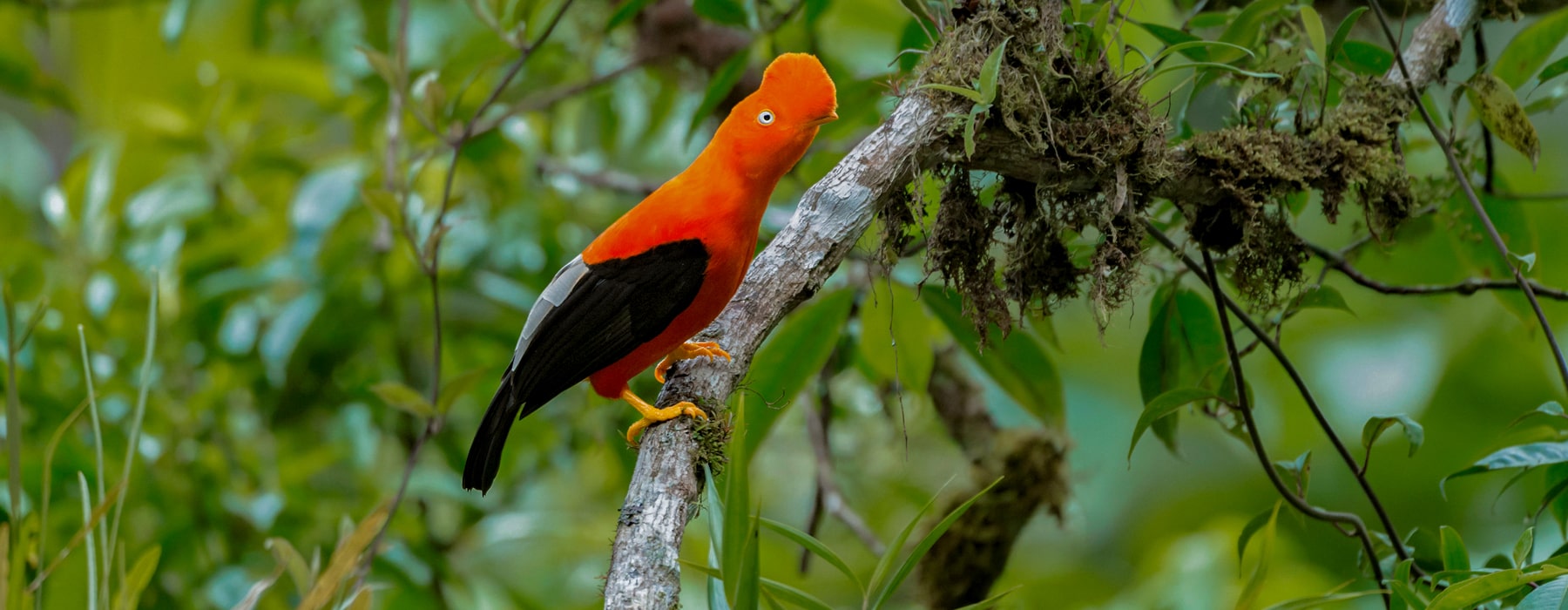
The Amazon rainforest is the largest tropical forest on the planet, home to an incredible variety of most unique birds of the Peruvian Amazon, with more than 1,800 species residing in this region alone. With its lush rainforest, winding rivers and impressive variety of habitats, it’s no wonder bird watchers from around the world flock to the region to catch a glimpse of its many avian wonders. From the beginning of the 80s of the 20th century until the beginning of the second decade of the 21st century, more new species of birds have been discovered in Peru than in any other country in the world.
Peru is home to an incredible variety of different most unique birds of the Peruvian Amazon, many of which cannot be found anywhere else in the world. From the colorful and charismatic to the strange and elusive, these birds are a must-see for any birdwatcher or anyone interested in Peru’s beautiful wildlife. The Amazon rainforest is considered one of the most biodiverse places on earth and is listed as one of the seven natural wonders of the world. Peru is two-time world champion of the Global Big Day, the largest bird watching competition, in the 2015 and 2016 editions.
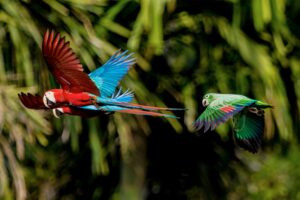
The cock-of-the-rock (Rupicola Peruviana), known in Quechua as “Punki” is the emblematic bird of Peru. It lives in the humid and cloudy forests of the eastern slope of the Andes, between 400 and 2500 meters above sea level. It is a beautiful species that in males has an orange crest that adorns its head. Black and white feathers cover the back and wings. As in most birds, the female’s color is more subtle. During the mating season, they usually make ritual displays in groups along with characteristic hoarse sounds and cackling that arouse the interest of bird watchers. Due to its morphology, it is considered one of the most physically strange birds in the Amazon.
The strange Hoatzin (Opisthocomus hozan) is not as pretty as toucans, tanagers or macaws, wins the prize for the strangest bird in the Amazon. Almost as large as a turkey, the Hoatzin spends its time resting around the lakes of the Amazon rainforest. It settles on bushes and small trees that grow at the edge of the water and growl.
It has the dimensions of a pheasant, but is much more slender, with a longer neck and tail and a small head. The face is naked, with a bright blue color and a red iris; the head is adorned with an upright, scruffy, fan-shaped chalk. Its approximate size is 60 cm to 66 cm and it can weigh 816 g.
It has a limited ability to fly, since it does not need to travel long distances in search of food due to the type of diet it has. Unlike other birds, instead of insects or fruits, it eats only the hard leaves of trees like the renaco. The hoatzin decomposes its food through bacterial fermentation to transform it into liquid, which causes it to give off a strong odor that serves to scare away its predators. As the hoatzin is a gregarious species, it likes to make nests in small colonies.
A curious fact is that, for a long time, due to the two peculiar claws it has on each wing, which disappear when it reaches adulthood, scientists thought it was a descendant of Archeopteryx, a fossil bird considered the missing link of reptiles. that evolved into birds.
It is the best known macaw (Ara Macao) in the world, due to the abundant scarlet red of its plumage. Also notable is the yellow color on the middle part of the wings and the blue on the rump and tail, which is long and pointed to give stability and direction to its flight. It has round, pale yellow to greenish eyes and are surrounded by white, featherless skin.
This macaw, which can measure between 84 cm and 92 cm and weigh between 900 g and 1500 g, likes to nest in tree holes, rock crevices or clay huts. Chooses a life partner when he turns 4 years old. The female usually lays up to four eggs, which are incubated for around 15 days. The young are born without feathers and are dependent on their parents for 25 days. The young are born without feathers and are dependent on their parents for 105 days, as they are fed by regurgitation. Only at one year are they completely independent, the age at which they leave the nest. Generally, the macaw feeds on seeds, fruits, insects and vegetables that it catches thanks to its powerful beak.
Like the blue and yellow macaw, the scarlet macaw is being registered as a vulnerable species due to the felling of trees in the Amazon, which reduces the availability of food and nesting places, and due to indiscriminate hunting, since it is in high demand. like a pet.
(Ara ararauna) This is one of the most colorful and spectacular parrots that the Amazon is home to. The combination of bright colors makes this bird an authentic work of art of nature. The wings are blue, part of the head too, but its chest and long tail are yellow. The size varies between 82 cm and 87 cm and the weight ranges between 900 g and 1300 g. It has a large, curved beak with which it feeds and helps it climb. The male is larger and has a stronger head and beak than the female. You can distinguish a young specimen from an adult by the color of the iris of its eyes. The first is yellow and the second is dark brown.
It feeds on seeds, plants and fruits, such as nuts and aguaje, but since some are toxic or poisonous, it eats clay from the river banks to counteract the harmful effect, and thus incorporates mineral salts into its diet. It nests in the hollows of palm trees and can travel up to 25 km in search of food.
It moves in pairs, in trios with its young, in small flocks and occasionally in large groups. It can be seen at sunrise or sunset. It is usually very boisterous when flying and very quiet when eating. It is a very long-lived animal, it can live over 50 years. But their numbers are decreasing, particularly due to hunting and the capture of their young to sell them as pets.
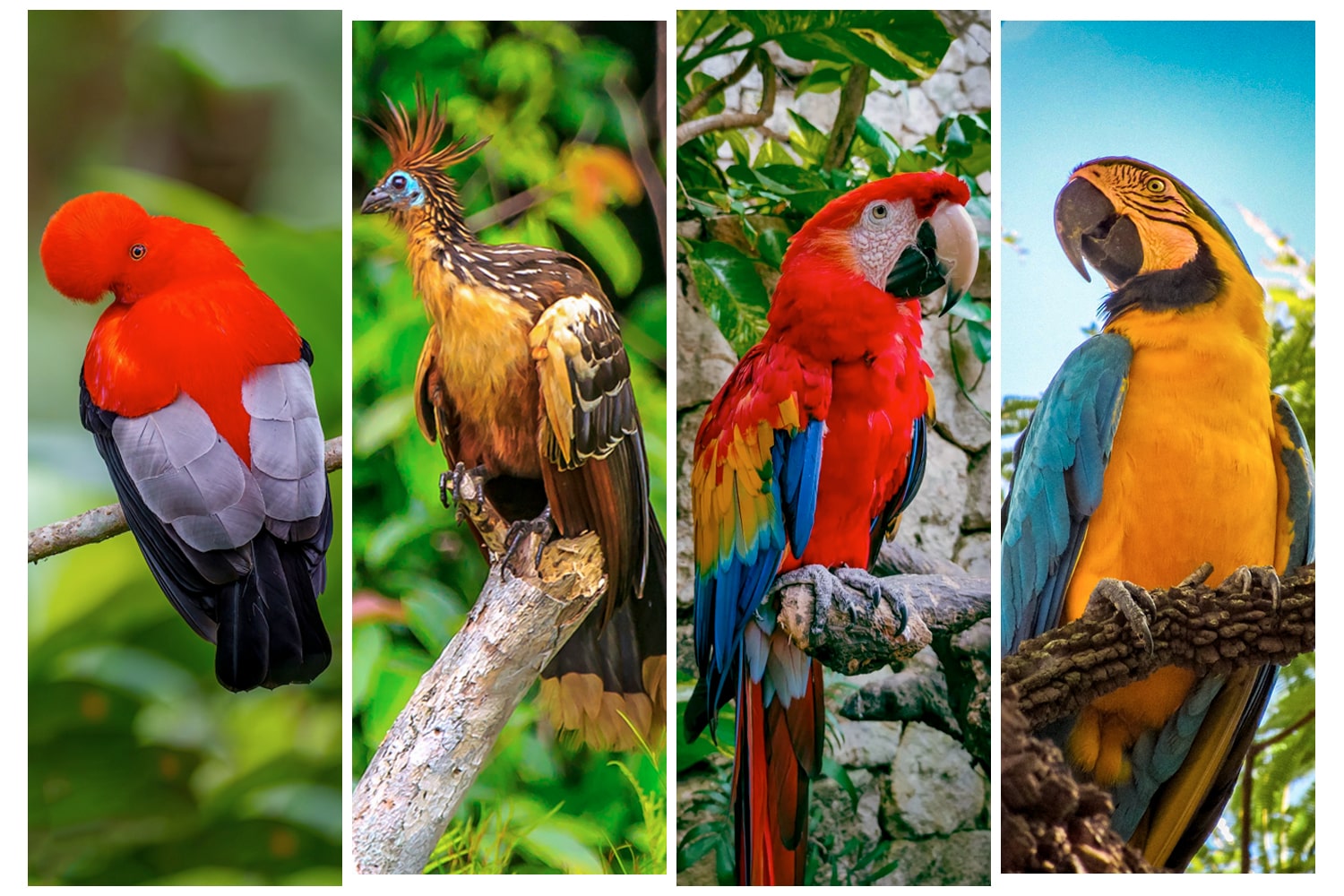
(Harpia harpyja) In the wonderful forests of Madre de Dios, Ucayali and Loreto, lives one of the most majestic and mysterious birds of prey: the harpy eagle. Precisely because of its size, it is considered one of the largest hunting birds in the world. The adult female can measure more than 1 meter in length and weigh up to 8 kg. On the other hand, the male is smaller, measuring approximately 96 cm long and weighing 5 kg to 6 kg. Due to its large and pointed beak, which helps it easily detach the flesh of its prey, its powerful and strong claws, which can reach 15 cm, and extremely sharp vision to locate its target at a distance, the harpy eagle occupies a high link in the food chain.
Today it is known that the harpy eagle in Peru is exclusively arboreal, that it likes to capture its prey at night or at dusk and that it has a preference, when forming its nests, for chestnut trees, one of the largest trees. of said area.
The Jabirú (Jabiru mycteria), with a height of 120-140 cm and a wingspan (spread wings) of 3 meters, is an unmistakable bird in wetlands. It is quite similar to its relative, the African marabou, but unlike it it does not eat corpses even though it is carnivorous, it prefers to fish in the water. It is not a sociable bird. He is found alone; Pairs build voluminous nests on large trees, laying 2 to 4 eggs. It is the highest flying bird in Central and South America, and the second on the continent in wingspan, surpassed by the Andean condor.
It is a mute bird, it has no voices or songs and communicates by tapping its beak. The couple lives together for life. Year after year at the end of autumn, they return to their enormous nest located at the top of a tree or palm tree to raise 3 or 4 chicks, which the female and the male will incubate in turns. It lives near lagoons and rivers, feeds on a large number of fish, mollusks and amphibians, occasionally also eating reptiles and small mammals.
(Nyctibius greiseus) Its shape makes it a very characteristic bird. Among other things that make it a very interesting animal is its song. It is a sedentary species that lives in open forests and savannahs. She lays a single spotted white egg directly on a branch or stump of a tree instead of building a real nest made of sticks. The incubation period is approximately 33 days. The male is responsible for warming and caring for the egg during the day and the female during the night. It has an approximate height between 21 – 60 cm, a weight of 250 gr. and its lifespan is 10 to 25 years.
This nocturnal insectivore hunts from a perch or elevated position. He spends the day perched upright on a tree stump, with which he blends in as if it were part of him. Potoos are only active at night and therefore sleep during the day. Like most other nocturnal birds, they also have plumage that acts as camouflage and gives them the appearance of a piece of tree bark or broken stump. Although foals have a small beak, their mouth is huge. They have large, wide mouths to help them catch moths, beetles, and other insects at night.
The racket hummingbird (Ocreatus underwoodií), also called leaf-tailed hummingbird, racket-tailed hummingbird, spatula-tailed hummingbird, etc. It is native to the northwest of South America, distributed throughout the Andean mountain ranges. It is a fairly common species in its natural habitats: the interior of humid forests as well as in open secondary growths from 1100 to 3000 m altitude.
On average it measures 12.7 cm in length, including 7.6 cm of the tail, and weighs 3 g. The beak is 13 mm long. The plumage is generally a bright metallic green, but the throat is more iridescent. The male’s tail is spectacular, with two very long, curved external feathers ending in greenish-blue rackets. Presents white shoes. The female has metallic green upperparts and mainly white underparts, with dense green dots on the flanks and a green malar striation. The zamarros are smaller, white or creamy. The tail is shorter but prominent, with white tips on the outer feathers.
It feeds on nectar from various flowers, and also captures insects in flight. It looks for food between heights from a few centimeters above the ground to strata from 6 cm to 18 m high.

(Eubucco versicolor) is a species that lives in the mountains of western South America. It measures about 16 cm long, the plumage of the upper parts of the males is green and their whitish belly mottled in green. The front of its face, crown and throat are red, framed by a light blue stripe on the back. Its naked lorum is black and has some black bristles around the beak. It has a yellow breast on top with a red stripe on the bottom. Their wide mustaches are blue or yellow depending on the subspecies. Females are green, with a blue face and throat, with a thin red crescent framing them on the upper part of the chest. Its beak is robust, relatively long and yellowish. It is found in the humid forests of the yungas of the eastern Andes of Peru.
The hooded parrot, dark-headed parrot or brown hooded parrot (pyrilia haematotis). It is found in lowlands and hills, up to 1600 meters above sea level, in the canopies of trees, and in the adjacent jungle covers.
The dark-headed parrot is 21 cm long and weighs 165 g. The adult has a brown head and neck; The face is darker, especially in males, and the ear is reddish. The rest of the body is green, with an olive tone on the chest. The outer part of the wings is blue with red trimmings that are clearly visible when flying; the tail has reddish sides. The eyes and beak are pale. Younger individuals are similar to adults, but paler, duller and without red on the head. It feeds in pairs or small groups of up to 15 individuals, on various seeds and fruits, including tree figs. It may be difficult to see it when feeding, since it is slow moving, generally silent, and stays in the canopy. the trees.
Its flight call is the rolling kereek, and when perched it has a variety of chirps and social chirps. The white eggs are laid in an open nest, usually in the hole of a tree. This species has been seriously affected by tree felling.
(Ceratopipra erythrocephala) Called the golden-headed manakin, it is native to the extreme southeast of Central America and South America. It is common in the middle and lower strata of humid forests, secondary forests and plantations. Their upper altitude limit is usually approximately 1100 m, but occasionally they are found up to 1500 meters above sea level.
Like other manakins, the golden-headed manakin is a compact, brightly colored forest bird, generally measuring 9.4 cm long and weighing 12.5 g. The plumage of the adult male is black except for the golden head, white and red thighs, pink legs and yellowish beak. Females and juvenile males have olive-green plumage. Like other manakins they feed on fruits and some insects.
The males give a fascinating display of courtship, accompanied by the humming of their wings, the female builds a shallow nest at a low height in a tree; Two yellowish veined eggs are laid, and fully incubated by the female for approximately 16-17 days.
(Trogon personatus) It is found in South America mainly in the Andes. Its natural habitats are subtropical or tropical moist forests and old degraded forests. It is a medium-sized trogon with an average of 27 centimeters in length and 56 grams in weight. Like all trogons the back, head and upper chest of the male are variously bright green, reddish-bronze or greenish-gold (depending on the subspecies). The belly and lower breast are red, the latter separated from the greenish upper breast by a narrow white band. The male has one eye other than yellow, which is red in most subspecies, but tends towards orange. The female is brown above, with a pinkish to red belly and breast; The white band that separates the brown and red color at the bottom is often very narrow or hidden.
Like all trogons, it feeds on fruits and insects. For reproduction, it excavates a nest cavity in the soft wood of a tree with a decaying upright trunk.
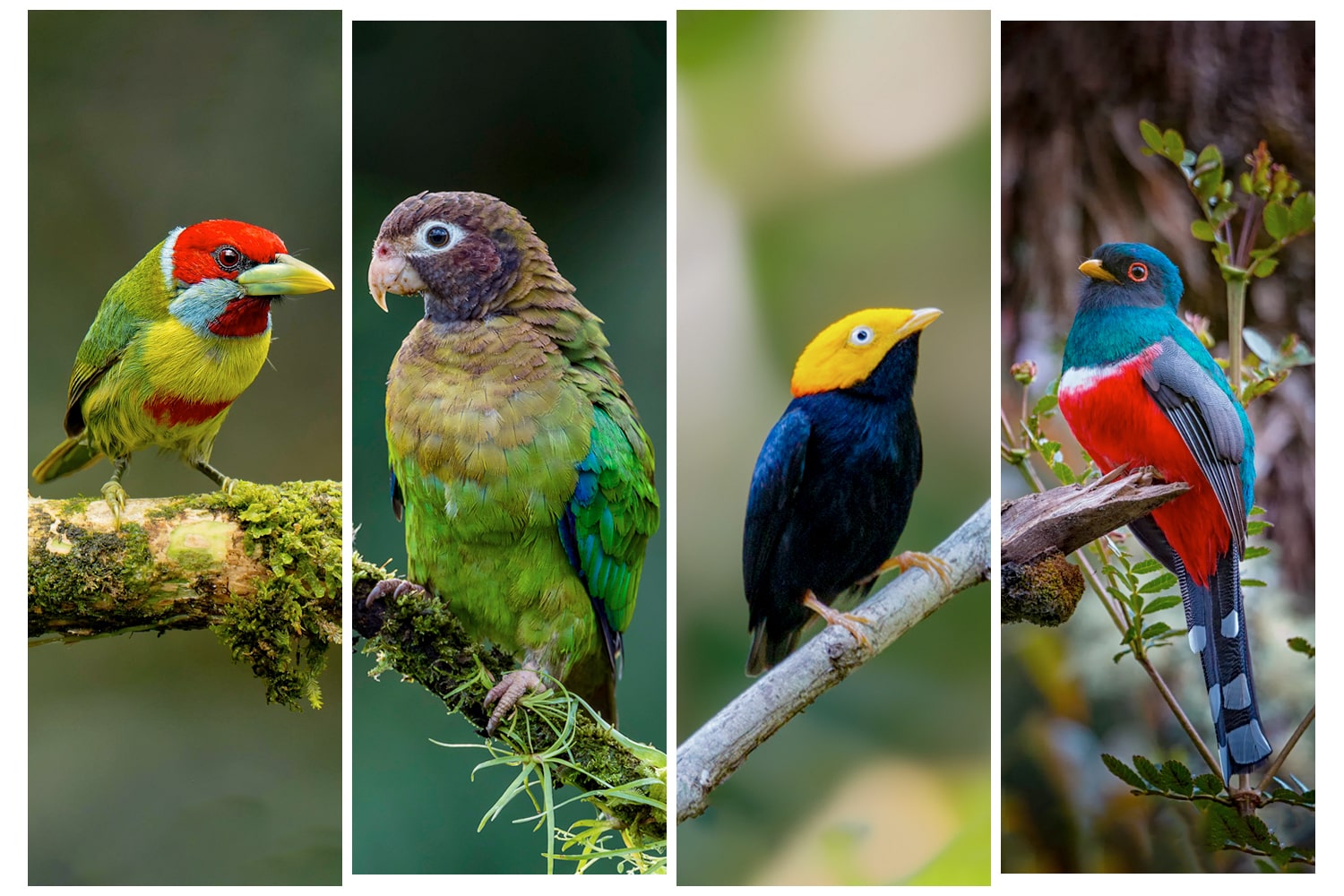
The candela topaz (Topaza pella), its natural habitat is tropical or humid subtropical lowland forests. The male measures about 20 centimeters and weighs about 14 grams. It has two feathers that protrude about 10 centimeters from its tail. Its plumage is more colorful than that of the female, being almost always purplish red on the back, neck and abdomen, with a green throat, surrounded by yellow, while that of the female is much less showy.
They feed at the middle and upper levels in the forest, mainly sucking nectar from flowers. Like other hummingbirds, they are excellent fliers. They live near water courses, the female lays two eggs, which she takes care of herself.
The Amazonian kingfisher (Chloroceryle amazona) resides in the lowlands of the American tropics. It is 29 to 30 centimeters in total length and weighs approximately 110 grams. It has the shape of a typical kingfisher, with a long tail and long beak. It is olive green on top and head, with a crest. Males have a white underside, a reddish-brown breast (broad band), and some gular green stripes. Females have a white underside with green patches on the sides of the breast and green eye stripes. Young birds look like the adult female, but have white spots on their wings.
This kingfisher breeds in stream or river huts. The nest is a horizontal tunnel made in a river bank 1.6 meters deep and 10 centimeters in diameter. The female lays three, sometimes four white eggs. These birds often have a harsh call, the song is rarely heard, emitted from the tops of trees, they are often seen perched on a branch near the water before diving to catch a fish.
The red-capped cardinal (Paraoria gularis) is native to the Amazon basin in South America. It is a common species in its natural habitats: flooded areas of the forest, swamps, mangroves or semi-open areas near water, up to 600 m altitude. It is common to see it in humid, lightly wooded places, in towns or cities like Puerto Maldonado. On Average it measures 16.5 cm in length and weighs 22 g, it has a crimson head; blackish the ocular and loreal region; the upper parts of the chest and belly. The throat is black that extends to the upper part of the chest. The upper jaw is black, while the lower jaw is flesh-colored. The legs are dark gray (almost black) and the iris is orange.
It is generally found in pairs or small family groups, near shores, often on the ground sweeping and sometimes on floating vegetation. Occasionally climbs trees foraging for insects on large branches. It feeds on insects, fruits and grains such as rice. It builds, in a tree or any other safe place, a shallow, bowl-shaped nest, using rootlets, thin branches and ferns for the material. The female lays two or three opaque, whitish-olive eggs with thick dark brown spots.
The paradise tanager (Tangara chilensis) is native to South America, in the Amazon basin. It measures between 13.5 and 15 cm in length and weighs on average 20.5 g, unmistakably colorful, the head is bright green, the nape and the upper part of the back and the wings are black, but the lower part of the back towards the tail is intense yellow. The throat is lilac or violet; the chest and belly are turquoise blue. The rump is red, the beak is black and the legs are gray.
The most common thing is to see it in bands of 4 to 20 individuals, which frequent high canopies and the emerging crowns of trees, search for food for a few minutes and then quickly fly to other distant tall trees. They are sometimes associated with other species of birds. They feed on fruits, berries and insects.
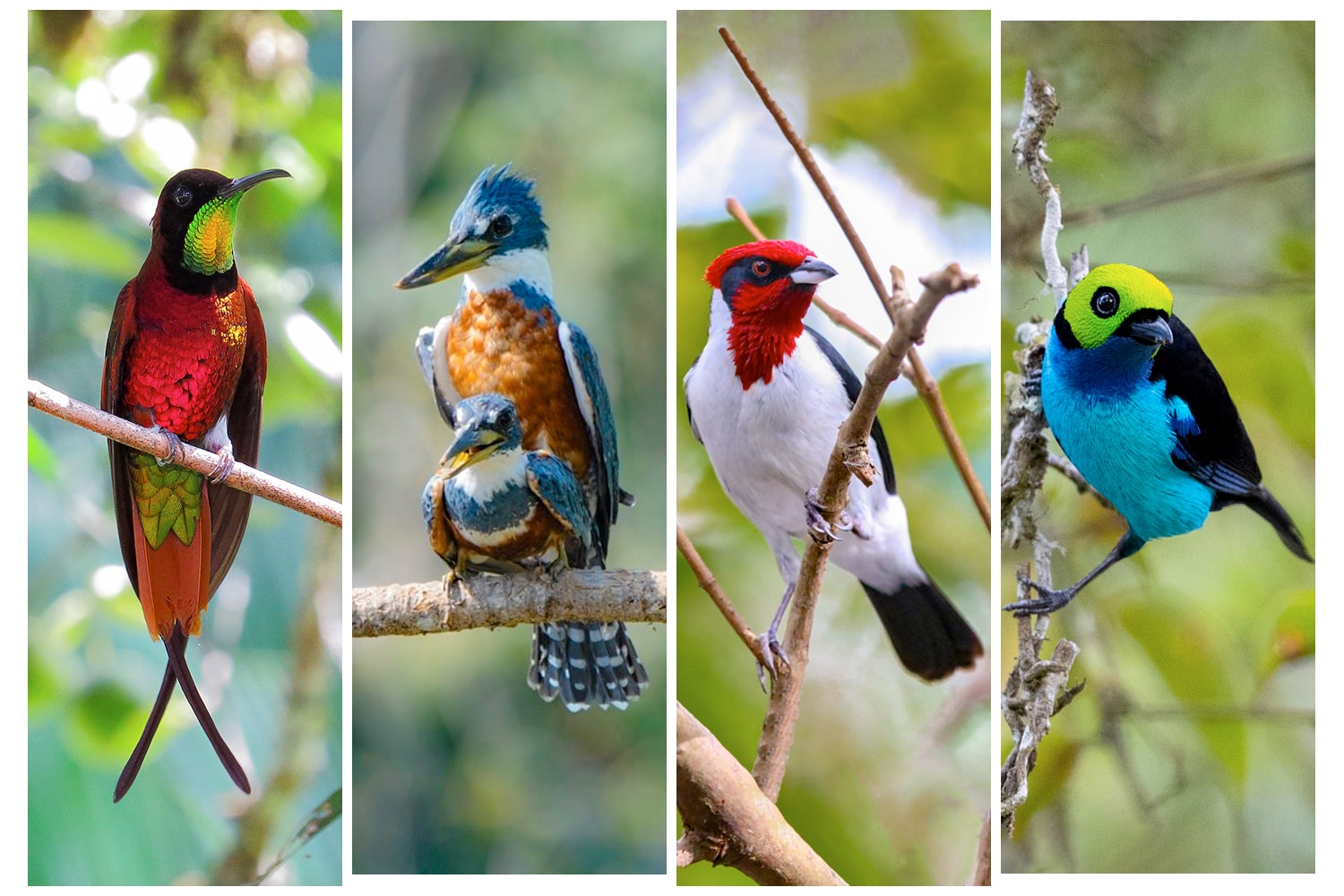
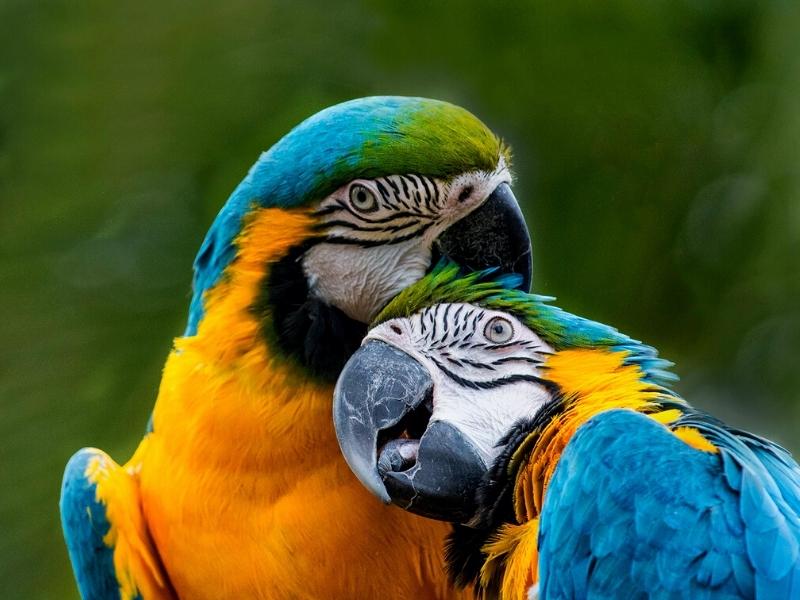
Peru is a country with different cultures and beautiful landscapes. It has one of the best gastronomy in the world. This tour is designed for travelers looking for unique and special moments in their vacations, and families who want to avoid crowds. You will visit the ancient city of Lima, the Amazon forest, the beautiful sacred valley of the Incas, the wonder of Machu Picchu.

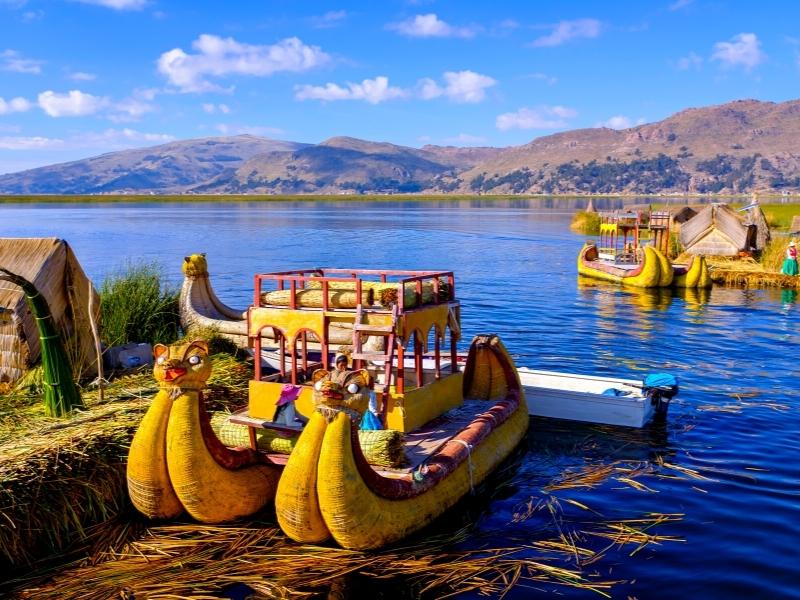
The wonders of Peru await you as you hike through the Manu Amazon rainforest, traverse the plains of the Sacred Valley of the Incas, and stroll the cobbled streets of Cusco on this 15-day trip from Lima. Search for monkeys and medicinal plants in the Amazon, travel the ancient road to Machu Picchu, experience a stay in a traditional community on the shores of serene Lake Titicaca.

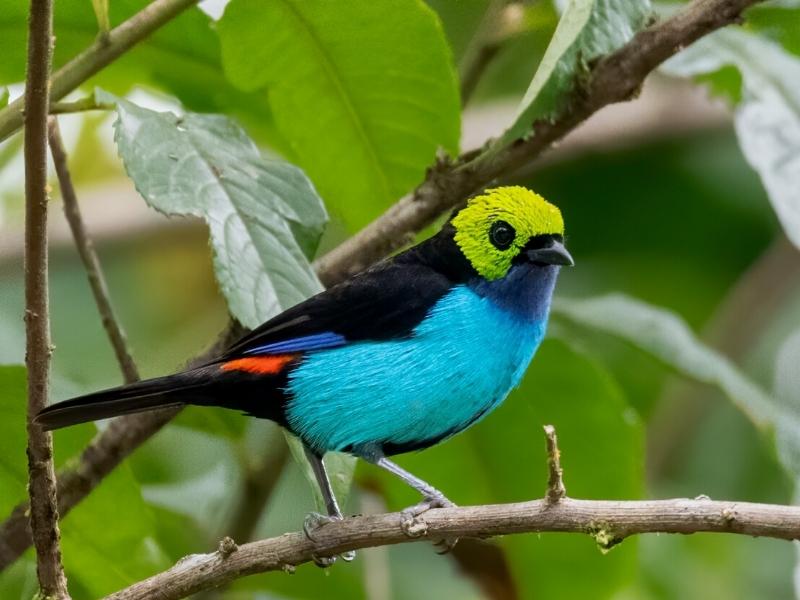
Manu National Park is located in the Amazon rainforest of Peru. This attraction is one of the few places on the planet that still maintains its great biodiversity of birds, mammals, reptiles and many medicinal plants.
